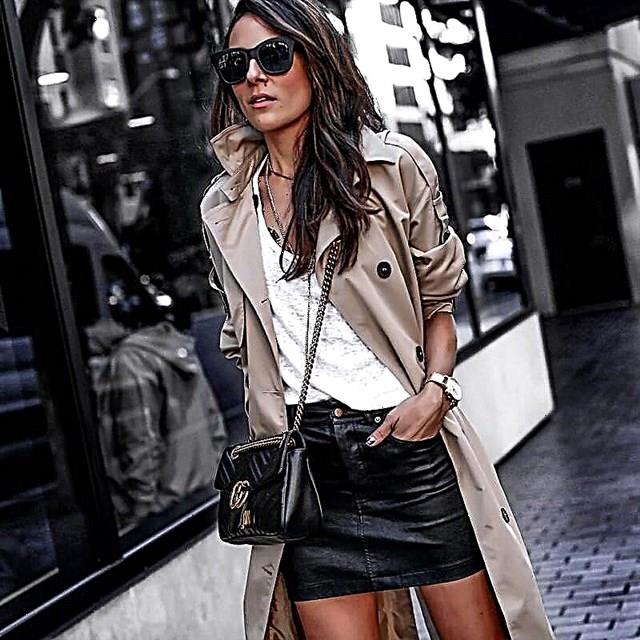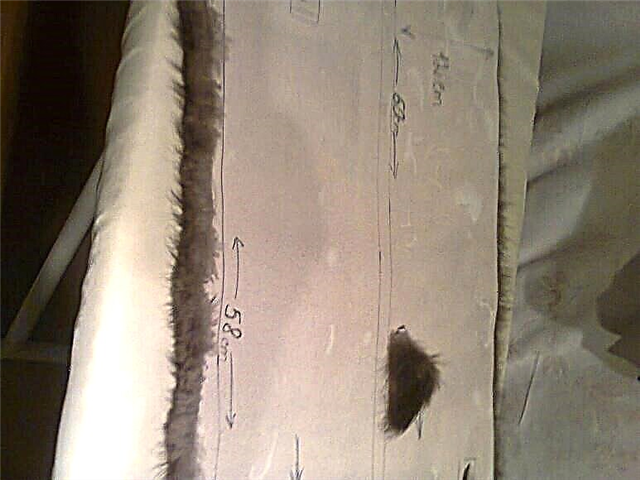Sundress or vest? Both that, and another at the same time! This safari model will decorate any wardrobe and add a bit of African flavor to the stylish atmosphere of the urban jungle.

Dress vest from the collection of the February magazine Burda Style "Signs of Spring", which became Theme of the issue, conquered many. The model is complemented by wide trousers made of fabric with an ethnic ornament and stripes to match the vest dress - an image with a hint of oriental flavor.
- Special offer

- 1
- 2
- 3
- 4
- Best-seller
- Special offer

- 1
- 2
- 3
- 4
The second option presented in the magazine is a garzon-style image, strict and at the same time a little mischievous. With a classic white shirt, tie and skinny black pants.
Pattern of the month: spectacular vest dress
In my opinion, this dress-vest is a solo - summer stylish sundress.
The magazine recommends using cotton or wool with elastane for this model, as well as dress-holding fabrics with and without elastane.

My choice fell on camel costume linen, fabric without elastane.

Fabric photo: @ tkani.andreana
Flax for summer is one of the most comfortable fabrics. He breathes, is pleasant to the body, it is not hot in him. Costume flaxes of high quality are distinguished by good shape stability, wear resistance, they are dense, but not at all stiff. Their creasing rate is almost the same as that of other flaxes, but at the same time, the fabric in the finished product does not lose its noble appearance. In addition, lined costume linen products are perfect for warm spring and office, for example, cardigans, dresses, vests.

Fabric photo: @ tkani.andreana
The plain color of flax will easily allow you to create both simple and complex images with this dress. In addition, the fabric is very flexible in work, it is easy to sew from it.
Individual changes, pattern adjustment, additions

✂ My sundress is sewn without lining, as a result, the assembly sequence of parts is slightly changed.
✂ All seams are treated with a slanting inlay.
✂ Correction in the area of embossed seams of the front bodice in accordance with the individual characteristics of the figure.
✂ The left and right front panel of the skirt are two identical details 25 (made a model of a skirt before cutting). If you cut out the front parts in accordance with the instructions (parts 25 and 26), the smell will be “deaf”.
✂ I refused the patch pockets in XXL format, despite their relevance. But they should definitely be left if you have a chiseled figure or a wasp waist, they emphasize the fragility of the figure. Also patch pockets will add volume to narrow hips.
Step 1

Remove the details of the paper pattern on tracing paper and cut it out.
Step 2. Cutting

21 The middle part of the bodice of the shelf - 4 parts (of which 2 - as picks)
22 Side part of the bodice of the shelf - 2 parts
23 The middle part of the bodice with a fold back - 1 piece
24 The back of the bodice - 2 parts
25 Right and left front panel of the skirt - 1 part each
27 The back panel of the skirt with a fold - 1 part
Step 3. Sundress bodice

Make embossed seams on the details of the bodice of the shelves, while at the top of the line you need to start exactly from the transverse marks.
Bind at the beginning and end of the stitches.

Similarly, make embossed seams on the bodice of the back.


Make side seams.

On the bodice of the dress pin the selection of the front side to the front side.

Stitch the outboard over the outer sections, starting the line from the marking of the shoulder seam.


And then grind the outboard along the outer cut of the armhole just before the beginning of the embossed seam, while the allowance of the armhole (lower) is turned down.

Be sure to make the tack.


Treat side seam allowances with a slanting inlay.
The ideal helper, or How to work with a magnetic guide for sewing machines



Process the bottom allowance of the armhole with an oblique inlay, but do not adjust the inlay to the armhole, but for now, just take it.

Also treat the embossed seams of the back of the bodice with the oblique inline along with the allowance for the armhole on the back.

Next, pin and grind the slanting inlay to the allowance for the neck of the back.
Press the trim up.
Unscrew the inlay for stock, bite and cut to the sewing line.
How to sew an oblique edging: 3 ways


Turn the pick up on the front side.


Combine the shoulder seams of the back and front, chip and grind them without grabbing the underboard of the front bodice.

Iron the shoulder seam allowances on the front bodice.

Overshoot the shoulder seam allowance inward.


Bast and stitch from the front exactly into the seam of sewing the shoulder seams.
Shoulder stitching in double bodice dress
Iron the middle parts of the bodice onto the part.
Iron and sweep the seam.


Unscrew rebounds inwards, pin, and then bast.


Unscrew the neckline allowance along with the tape on the wrong side and stitch.
Iron the oblique embossed seams of the back of the bodice along with the allowance for the armhole on the back to iron on the back. Sew on only the armhole allowance.
Stitch obliquely processed allowances along the bottom of the armhole.
Step 4. Dress skirt


On the front and back panels of the skirt, grind the tucks.

Iron tuck depths to midline of front / back.
The basics of sewing: how to tuck

On the skirt, make side seams.
Iron the seam allowances back.
Cut the internal allowance.

Process the allowance with a slanting inlay.

From the front side, stitch the side seams.
How to sew oblique seam allowances with stitching

Obliquely inlay, cut the sections of all-cut skirts of the right and left panels of the skirt.

Obliquely trim the bottom cut of the skirt.

Unscrew the hem allowance for the bottom of the skirt to the wrong side and iron it.
Sew on the hem or sew it in manually with a blind stitch with loose stitches.
Basic Hand Stitches

Obliquely trim the upper section of the skirt.
Step 5

Obliquely trim the bottom cut of the bodice of the dress.
Step 6

Pin the skirt to the bodice of the dress with the front side to the front side, combining the lines of the middle of the front and the back, as well as the side seams.
Tucks on the skirt combine with embossed seams of the bodice of the dress.
Sew the whole-cut edge of the right front panel of the skirt to the right selection, the left to the left.


Stitch the skirt, while on the middle of the bodice of the right shelf and on the right fit, leave open the cuts between the transverse marks (= loops).
Bind at the beginning and end of the stitches.

Iron seam allowances.
Step 7
Unscrew the entire cut of the right and left front panels of the skirt along the fold line to the wrong side and press down.
Step 8

Sew the bottom of the one-piece trim to the hem of the bottom of the dress.
Step 9

Sew the bodice of the sundress by hand with a hidden stitch.


Sew the edges of the slits for the loops on the right shelf and the right one to sew manually with hidden stitches.
Step 10
Place the right shelf on the left shelf, aligning the lines of the middle of the front.
On the left shelf, place the labels for the buttons according to the loops.

Manually sew the left side of the dress together with hidden stitches from edge to end of the dress, exactly as in the seam of sewing.

Sew on the buttons.
10 unusual ways to sew a button

Sundress is ready!
Vest solo: 6 options for evening outfits
Modern retro: what is a coat dress and how to wear it
The author of the master class and photo: Julia Dekanova












